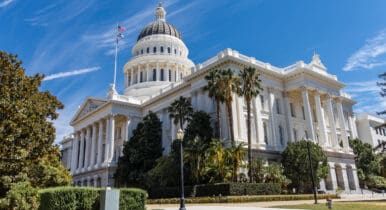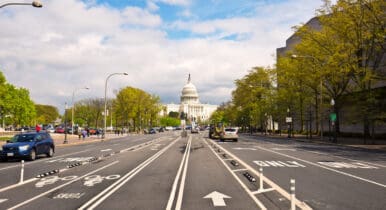Why the Barriers to In-Person Advocacy Need to Be Short Lived
In this article, two advocacy professionals argue that barriers to in-person advocacy due to COVID need to be short-lived.

The ongoing pandemic and the Jan. 6 riot at the Capitol have resulted in added restrictions and physical barriers to accessing the Hill. Many registered lobbyists, advocacy professionals, and citizen activists are still wondering what 2021 will look like in terms of being able meet with members of Congress and staff, as well as hosting customary fly-ins, participating in hearings, and attending events on Capitol Hill.
Furthermore, many state Capitols, local government buildings, and constituent service centers are still addressing the public health and safety concerns surrounding these norm-altering events.
The forced shift to virtual advocacy has resulted in numerous benefits ranging from organizational cost savings to greater entry-level participation by a new group of advocates willing to engage with lawmakers and staff through email, text, social media, and video. But it’s also created several challenges for some organizations and individual practitioners that are more dependent on personal relationships, face-to-face interactions, and a wide network of individuals on the Hill they can meet with when an issue arises.
We know person-to-person communications is the most effective and expedient. Moreover, many state governments aren’t yet equipped, like Congress is, with full video — some have audio only — to shine the light of transparency on proceedings and hearings. Technology has come a long way, but it leaves a great deal to be desired in terms of nuanced fact sharing that can only be revealed in person.
Virtual meetings, briefings, and events are the best complements to in-person activities and shouldn’t be a long-term replacement for a professional lobbyist or average citizen’s ability to engage directly with lawmakers. Hopefully, these digital innovations and tactics can be added to the overall toolbox and expand the advocacy professional’s embrace of technology.
As public health professionals address the pandemic and society begins to reopen safely, government entities should also reopen public access to facilities and personnel. The security concerns should also be addressed moving forward to ensure elected officials’ safety while fostering public participation and promoting public confidence in government at work.
Addressing health and safety concerns throughout government isn’t an easy task given the present challenges. But public participation is a cornerstone of our system of government and a fundamental right that should be preserved. Sure, there may be further screening, credentialing, or new procedures for entry to the Capitol and other federal, state, and local government buildings. But everyday citizens shouldn’t be shut off from communicating with their elected officials. Lawmakers and experts in health and safety should be hesitant of enacting any lasting barriers for advocacy participation or entry, and should be cognizant of the fundamental role that average grassroots participants play in shaping policy.
The fencing and walls around the Capitol shouldn’t be a permanent structure nor should lawmakers be inaccessible. As we get through the pandemic and society grapples with new health requirements in all buildings — governmental and non-governmental — a concerted effort must be made to adequately address security concerns while lifting barriers and restrictions to allow for continued citizen and professional participation in the public policy process.
Joshua Habursky is the Head of Federal Affairs at the Premium Cigar Association and Adjunct Professor at George Washington University.
Mike Fulton directs the Washington, D.C., office of Asher Agency and teaches public affairs in the West Virginia University Reed College of Media’s Integrated Marketing Communications program.


